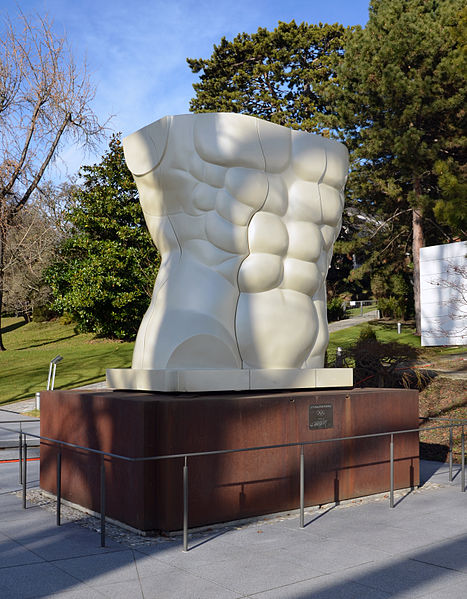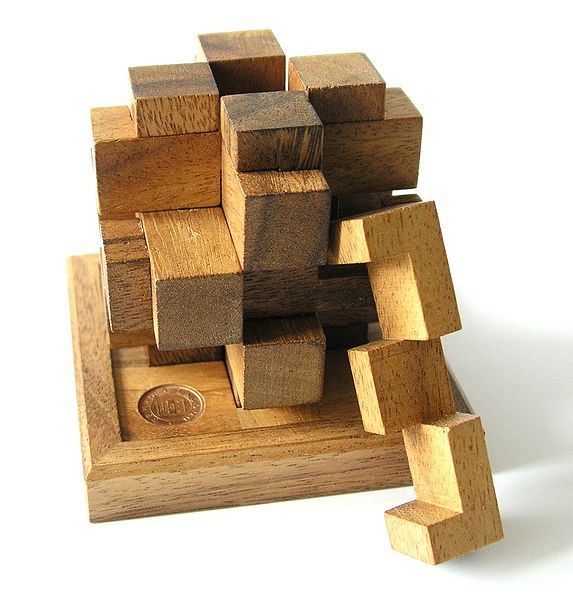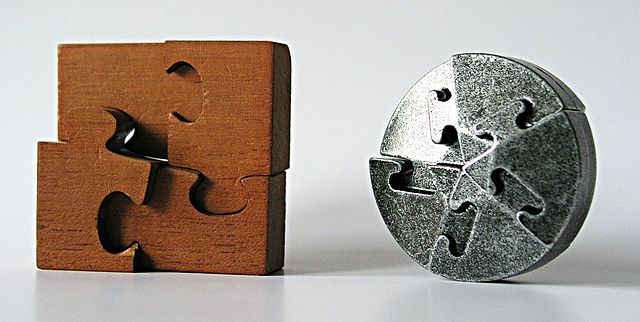Miguel Ortiz Berrocal was a Spanish figurative and abstract sculptor. He is best known for his puzzle sculptures, which can be disassembled into many abstract pieces. These works are also known for the miniature artworks and jewelry incorporated into or concealed within them, and the fact that some of the sculptures can be reassembled or reconfigured into different arrangements. Berrocal's sculptures span a wide range of physical sizes from monumental outdoor public works, to intricate puzzle sculptures small enough to be worn as pendants, bracelets, or other body ornamentation.
Torso Vectra (1996), at Opel España in Zaragoza, Spain
Set of Berrocal mini puzzle sculptures marketed in the 1970s, each of which incorporates a wearable finger ring
Siéxtasis (1977), in Jardines de Picasso, Málaga, Spain
Citius, Altius, Fortius, at the entrance to the Olympic Museum in Lausanne
A mechanical puzzle is a puzzle presented as a set of mechanically interlinked pieces in which the solution is to manipulate the whole object or parts of it. While puzzles of this type have been in use by humanity as early as the 3rd century BC, one of the most well-known mechanical puzzles of modern day is the Rubik's Cube, invented by the Hungarian architect Ernő Rubik in 1974. The puzzles are typically designed for a single player, where the goal is for the player to discover the principle of the object, rather than accidentally coming up with the right solution through trial and error. With this in mind, they are often used as an intelligence test or in problem solving training.
Mechanical puzzle design by W. Altekruse, patented in 1890. The puzzle consists of twelve identical pieces which must be fitted together.
Hoffman's packing puzzle
Disassembly puzzles
The Chinese wood knot, a notorious interlocking puzzle. In this particular version designed by Bill Cutler, five moves are needed before the first piece can be removed.








